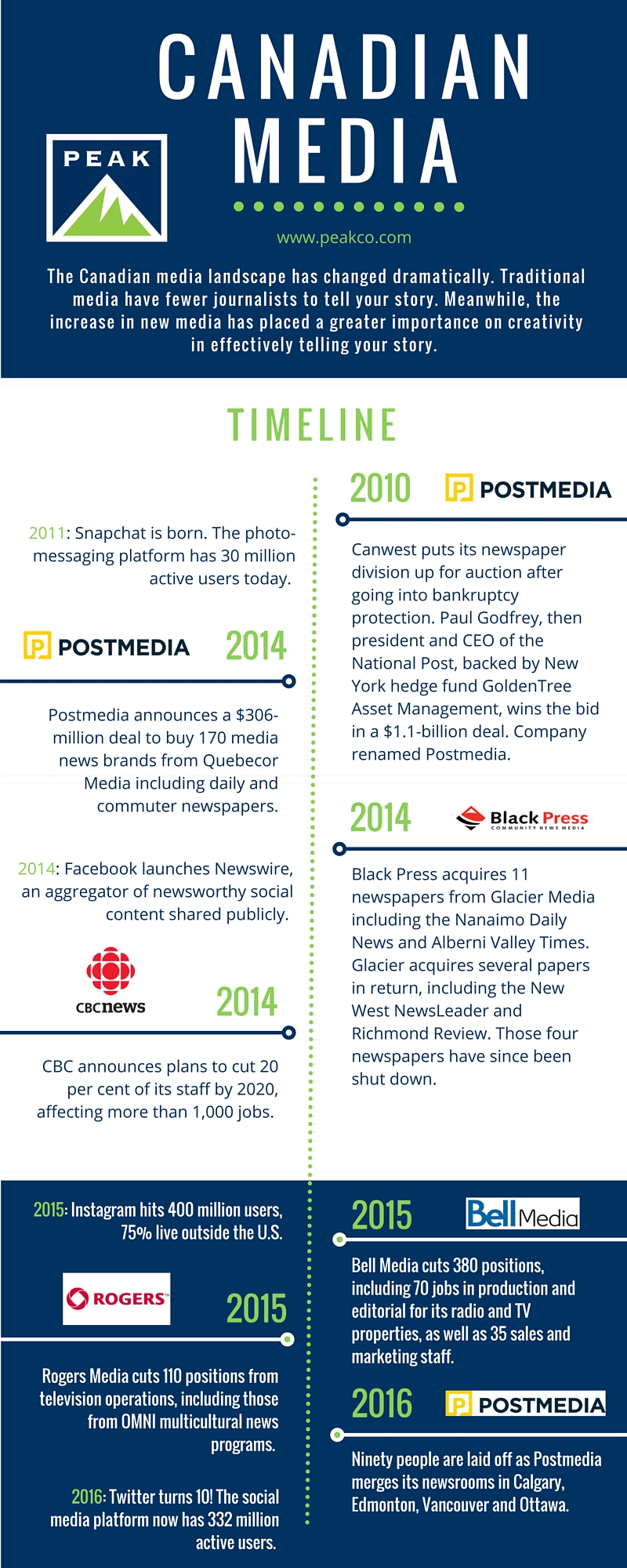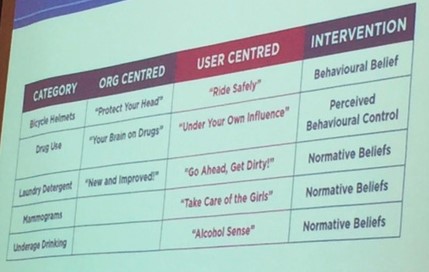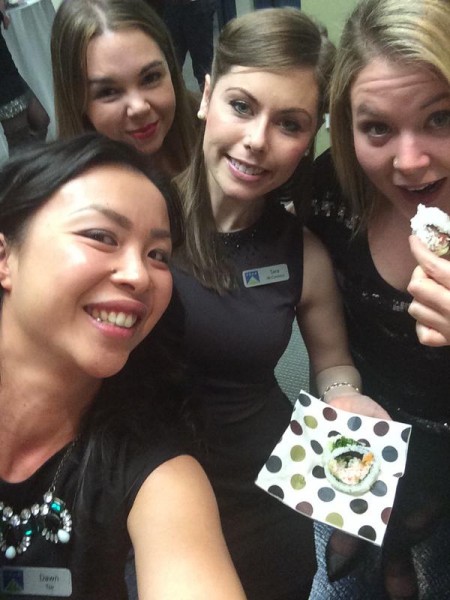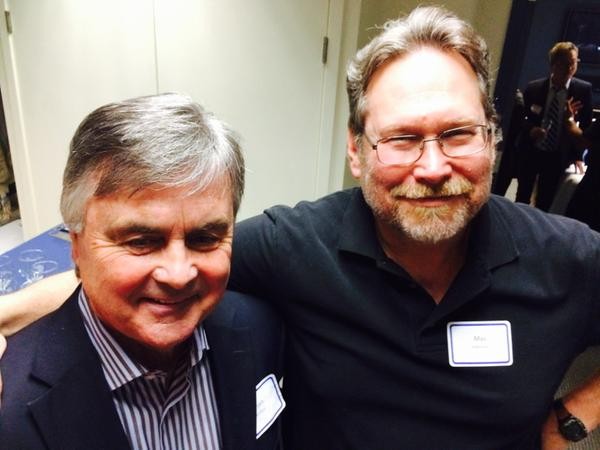Client objective
After an outstanding media success on Vancouver’s 30th anniversary of the dragon boat festival in 2018, how would Peak attract another 90 media hits, in addition to the 28 event listings a year later? The goal was to attract the same or more media coverage, in advance of and during the festival.
The Campaign
Peak went out and pitched the same media for stories, interviews and calendar event listings. We crafted creative profiles and backgrounders. In early June, three weeks before the festival, Peak held a news conference to preview the Concord Pacific Dragon Boat Festival and unveil a new light-weight dragon boat that was in development. We also gave media the opportunity to get into the newly built boat and race against the older models.
The Results
In 2019, Peak drove an astounding 68 per cent more media coverage than in 2018. This is one of Vancouver’s biggest annual festivals and fun events, so it is worthy of repeat coverage. The morning news conference with real news received a significant amount of media coverage in the lead-up to the festival itself. That was a differentiator. Peak also harnessed established media relationships to ensure success in 2019.
Tags: media relations
Identify your social media goals
Having a clear direction or end goal to your social media plan is key to determining your strategy and how you measure your return on investment (ROI). To set this up, you need to understand your company’s overall business goals, as well as their marketing / PR objectives. Ideally, a social media plan plays a part in achieving your company’s overall business goals (eg. increasing ticket sales, generating online transactions on an e-commerce website, or breaking into a new market).
Create a content calendar
Keeping your social media accounts active with relevant and quality content is key to being noticed in densely populated platforms. More than 60 million businesses worldwide now have a Facebook page, and each and every one of them are aiming to grow their following. A social media content calendar is an easy way to organize your content strategy and ensure that your company is publishing new (and relevant) ideas regularly.
Social Listening
To judge how well your social strategy is working, monitor the activity around your accounts and listen to how audiences are engaging with you. Firstly though, make sure you know what you know what you want to listen for. There are approximately 6,000 tweets sent in the twitter world every second, so understanding the language around an issue will make it quicker and easier to find the relevant ones.
Using social media listening tools helps you understand what is being said about your business, your brand, and popular topics within your industry. You can even listen in on what your competitors are saying, how they are engaging with their followers, who their followers are, and how their followers are responding to their content.
Engagement
Now that you’re listening and monitoring your conversations, don’t forget the most important part of social media — engagement. Social media is a powerful communications tool and has revolutionized the way business and brands reach their customers / stakeholders. Engaging with your followers or audience goes towards boosting your brand and reputation in the social sphere.
Analytics and Reporting
Arguably, the most important part of any social media plan is the analytics and reporting. The only way to show value in your social media plan is to demonstrate ROI. For example, if your social media goal is to drive traffic to your website, keep track of these numbers using Google Analytics. Try your best to track absolutely everything based on what your ROI would look like. Report on what social users like and don’t like. Generating reports periodically will help you evaluate your social strategy on an ongoing basis, and guide you to tweaking it so you can achieve your social goals.
Tags: brand journalism, Digital + Social Media, media relations
Most of the world now knows about the “United Airlines incident” after a video of a 69-year-old passenger being forcibly removed from his seat went viral earlier this week.
The video, shot from another passenger’s phone, showed clearly the screaming man being dragged down the aisle, leaving him bloodied and terrified – along with the over- booked flight of witnesses.
Within hours of the video being captured, #United was the leading hashtag worldwide on Twitter. Even in China, where Twitter and Facebook don’t exist, more than 97,000 comments had been recorded on one Weibo post by the end of the day, along with a new hashtag #Chineselivesmatter.
Following the Twitter (and Weibo) eruption of the United Airlines incident, we’re reminded us just how vital a solid social media communications strategy is to any business, particularly in the event of a crisis.
When a crisis does hit a business, social media excels as a way to spread news in a quick and efficient manner. Bad news will always travel fast, and these days it’s likely to gain traction on social platforms before the traditional media get to it. It’s important to have steps in place to manage reaction in the midst of a social media storm and how monitoring early warning alerts of any change in volume or sentiment around your brand will give your team a chance to prepare for what’s coming.
When tackling a social media crisis, I believe there are 5 essential steps that need to be included in any PR plan:
- Plan ahead.
Even if you can’t predict what might set off a social media meltdown, the steps you will need to take are the same: Respond, reassure, research, respond again, and react. Your plan needs to state how you will do this within the tight time demands of social media. Who gets notifications? Who can access the Twitter account? How slow is your approval process? Who has final sign off? Contact details for spokespeople? Have pre-approved statements available, this will make the reaction process far more manageable.
- Listen.
Every business should have social and media monitoring set up to capture what is being said about its brand so that if there’s a spike in negativity, or an emerging issue, you can react instantly. Frankly, a Google alert isn’t really sufficient. For effective monitoring, you need to pin point what it is you want to listen for. There are 6000 tweets sent every second, so understanding the language around an issue will make it quicker and easier to find the relevant ones. Successful monitoring should include daily reporting, early warning alerts if there is a change in volume or sentiment, or mentions from highly influential critics.
- Prepare your posts.
When something happens, you need to be out, publicly, with a response in about 10 minutes. Have a holding tweet at the ready, or a post that acknowledges that something has happened – even if you can’t give out specifics, being the first to acknowledge a situation can go a long way. Even a post that says “We understand an incident has occurred. We are finding out more information and will update in 10 minutes” is better than nothing.
- Pick your platform.
Twitter is the place for breaking news. Facebook is the place for connecting and seeking feedback. Instagram should not be used anywhere near a corporate crisis. Understanding the difference of your social media platforms and having sufficient followers to ensure you can engage when needed is important.
- Respond swiftly and carefully.
It is essential that in any situation involving your business, you are the first person to weigh in and that you have the right information on hand. If you do something wrong admit, apologize, and accept responsibility. The sooner you do, the less likely that your original stuff up will spiral out of control. It’s important to not add fuel to the fire. Understand how your situation is being reacted to on social media and plan your responses accordingly. Even if you do believe your actions are justified, pause to think about how they are perceived.
Chances are, your business is not in the habit of dragging people out of plane seats while being filmed on a smartphone, but there are lessons in United’s response for everyone.
Tags: brand engagement, business, crisis communications, issues management, leadership, media relations, social media
Take the case of the Sunshine Coast Health Centre, a well-respected addiction treatment centre in Powell River where 20-year-old Brandon Jansen died of a fentanyl overdose last March. The centre was getting a lot of bad publicity with family members saying it was easy for Brandon to get contraband drugs within three days of entering treatment.
But investigations by both the RCMP and the regulator – Vancouver Coastal Health’s Community Care Facilities Licensing authority – determined there were no contraventions of rules and regulations.
In fact, the facility had consistently maintained a low risk rating with no other critical incidents or any drug-related incidents reported since the facility was first licensed in 2004. Yet, the centre’s reputation was taking a beating.
CEO Melanie Jordan has much to say about what treatment is – and what it isn’t. Addiction treatment centres are not prisons or lockup. Clients have rights and freedom.
Accredited staff members treat people for many types of addictions including alcoholism and prescription drugs abuse. Root causes of addiction are addressed including mental health and physical issues. Melanie Jordan wanted to speak publicly about the tragic death in her facility and have a voice in the search for solutions to stop the unprecedented number of deaths caused by fentanyl.
She enthusiastically embraced the concept of being front and centre at a news conference to be held November 14th. A Media Advisory was sent out inviting reporters and videographers to attend.
As the news conference got underway, news cameras quickly swung to the doorway where three visitors had appeared: Brandon Jansen’s mother Michelle, her son Nicholas and her lawyer.
They politely listened as the news conference went forward with Melanie Jordan providing reporters with the written investigation reports that found her centre was operating within the regulations.
But her most important message was aimed at the government and the medical profession.
Staff at the centre had not been permitted to administer the opiate antidote naloxone and it was possible that could have saved Brandon’s life.
Since Brandon’s death, the centre has received permission to train staff to administer naloxone and the staff physician can treat clients with Suboxone that takes away the craving for opiates.
With more than a dozen news organizations present at the news conference, this important information was received by the public across Canada. The record was set straight. The way forward was articulated. The news went out – all at once.
And the voice of Brandon Jansen’s family was also heard. They held their own media briefing following the news conference so as much information as possible surrounding this tragic death would be in the public forum.
Melanie Jordan and the Sunshine Coast Health Centre have standing at an inquest into Brandon Jansen’s death scheduled for January. This will be another forum where voices will be heard.
Tags: crisis communications, media relations, Peak Communicators, Public relations, Vancouver PR
In just a handful of years, the Canadian media landscape has evolved by leaps and bounds. Traditional media outlets like print and television are beginning to give way to digital media, resulting in a significant and dramatic shift in the way media is produced and consumed. Newsrooms have consolidated as digital media continues to change and develop at a faster pace than ever. As more millennials enter the workforce, we’re starting to see brands rely more and more on social media tactics right alongside traditional media.
So, let’s take a look back at a brief timeline of the Canadian media landscape:

This blog post was contributed by our 2016 Peak Communicators Practicum Scholarship winner and intern, Thomas Miller. Connect with Thomas here!
Tags: canadian media, media relations, Public relations
Donald Trump is breaking every conceivable PR101, 202 and even PR PhD rule and remains completely unaffected by it. In fact, the more he breaks the rules, the more popular he becomes. So, are those basic public relation rules that we all know outdated? His communication style is aggressive to the point of stand-up comedy; more propaganda, less public relations. But, for argument’s sake, should we throw out what we know and adopt the shoot-from-the-lip style Trump embodies – especially in the face of a crisis?
In a political nomination campaign, particularly in the United States, you can do the following, apparently without fear of law suits or reprisals:
- Attack competitors
- Call opponents liars
- Threaten to punch protestors in the face
- Be yourself – no matter what
- Make fun of the media who carry your message
Say Trump wins the election. Should you or your company adopt his style and become more aggressive in the face of attacks by the media or critics? Should you go on the offensive to try to galvanize your supporters? Should you simply thumb your nose at powerful media and treat it and your detractors with disdain?
Consider this: If “the Donald” was your CEO in a crisis and talking about your company’s critics or competitors as he is talking now about his opponents and others, how do you think it would affect your brand? I suspect his board of directors would be the first to say, “Donald, you’re fired!”
In the real world of business, you simply can’t do what “the Donald” is doing. Why? Because politics is not business reality. So, in light of Trump’s recent antics in the media spotlight, here are some lessons we can all learn:
Never attack your competitors
The first rule of good public relations is you never attack competitors. Exxon didn’t gloat publically when BP sprung a leak in the Gulf of Mexico. When Walmart parmesan cheese was found to contain cellulose recently, Safeway didn’t run attack ads about it. When you begin throwing stones it’s too easy for the media or the public to pick up some of those same rocks and toss them back at you.
Don’t call opponents liars
“The Donald” calls his opponents liars. He does this often. It’s his go-to pitch. In a heated public debate which your company may be involved in, calling opponents liars will galvanize opposition and lose you public support. When you lose your cool, you lose – period. The best strategy is to stick to your facts day in and day out and to let your facts ultimately win the day. Keep a level-head because the more nasty and out of control your opponents get, the more support you will get.
Don’t threaten to punch protestors in the face
When asked, many a CEO might agree privately, that in certain instances they’d like to punch a protester in the face. Now imagine a big project, like B.C.’s pipelines and Site C dam proposals. Imagine a CEO saying on TV, “I’d like to punch that protestor in the face.” They’d be looking for a new career immediately and the project would be dead.
You can be your own worst enemy
In Trump’s case, this means his shoot-from-the-lip style is not a good idea in a crisis. Being yourself is actually good advice for a CEO facing a crisis, as long as being yourself means you show that you care, admit your mistakes, are truthful and outline a plan to make things right. If you are shaken by what happened, allow it to show, allow your concern to show through – be human. But, if being yourself means you go on the offensive and attack everyone in your path, then save that for the boardroom.
Media don’t like to be made fun of
The media, including social media, carry your message. Making fun of media pundits, reporters, bloggers and analysts is never a good idea. It may feel to you like you are winning but the “win” is temporary. They always get the last word. You should correct factual errors they have made, point out your positive message, and then take the high road. The public is smarter than you think. They will get your message and understand when the media is being unfair.
The bottom line?
Everyone likes to copy a winner; business schools teach investment success models such as Warren Buffett’s. But, we also laud those who break the mold and go against the establishment. Case in point? Donald Trump.
If you copy Donald Trump’s nomination strategy in your business I would say that you do so at your own peril. Right now, Donald Trump doesn’t need real answers, he just needs one-liners, of which he seems to have an endless supply. When pushed into a corner he goes on a personal attack, calls someone a liar, raises a boogeyman or mentions 9-11.
A nomination campaign is not the business world or even the real world. It is more like reality TV. There is only one measuring stick: winning, and the focus is extremely short term. There is no tomorrow.
Successful businesses have a long time horizon to consider because the public won’t forget and you don’t get to completely rebrand every four years like a political party does. Unlike a new political leader, a new CEO doesn’t make all the old negative news magically disappear.
Tags: crisis communications, donald trump, media relations, Public relations
Out with the old, in with the new
Looking back on nearly two decades of public relations work following a 30-year career as a news reporter provides an opportunity to reflect on how PR and the media interact in 2016. The new reality for the news media is there are now fewer people employed to do what, in many cases, is much more work.
After a series of buyouts of senior people, The Vancouver Sun and The Province announced earlier this year that they are merging their newsrooms. What does this mean for PR? Less competition and fewer people to cover news.
Television news that once was confined to slots at noon, supper hour and late newscasts is now delivered 24 hours a day in back to back ‘news wheel’ formats that stretch reporters, editors and videographers to new limits.
A new media frontier
The power of the internet continues to grow, with bloggers having as much or more impact than reporters for mainstream media.
So how does this impact the ability of companies, organizations and public relations professionals to get the message out in the media?
Simply put, the media landscape may have changed dramatically but there are more opportunities and channels than ever for publicity.
Everybody is talking about Donald Trump
Love him or hate him, Trump is a publicity machine. He is getting more media attention than anyone else on earth with radio, television, newspapers and social channels featuring what seems to be a play-by-play of Trump’s latest antics in the Republican presidential candidate race.
Getting noticed still makes or breaks reputations, makes the cash register ring and brings people to the door.
And so, getting your message out with ‘earned’ media – otherwise known as public relations – is still one of the best ways to become known. Although the number of reporters may be contracting, newspapers and television are still hungry for content. The number of social channels grows every day. Trade magazines also abound and every industry is supported by at least one that’s looking for stories.
Do-it-yourself
If you can’t get the media to tell your story through positive news coverage, do it yourself. Have videos produced and tell the story of your own company, your product or your services with words and pictures that matter to your brand. Then, feature it on your website.
Do something amazing and put it on the web via Youtube, Vimeo or Instagram. Send this to everyone you know. If your story goes viral, everyone will know what you want to get across and good things can happen.
Tags: donald trump, media relations, new media, Public relations, social media
This year’s BCAMA annual marketing agency panel did not disappoint. Expert speakers from top agencies provided a strong sense of what’s to come this year and created a healthy debate around what’s really going to be some of the key drivers. There was a ton of information relayed to the hundreds of branding and communications professionals in the audience. Here are few of the highlights we took away with us.

Speaker #1: Andrew McCarthy – President, Tribal Worldwide Canada
The theme of Andrew’s presentation was around using content to connect with consumers. Research has recently shown that 71% of consumers who have blocked ads have said they’d consider whitelist advertising if the content was decent. Basically, people hate bad advertising.
So, how do you increase the shareability of your content?
- Relatability – your content must be relevant
- Have a point of view – this will help streamline content and ensure it’s consistent and interesting
- Findability – search rankings are key when it comes to content dissemination
- Mobility – make sure your content is where your audience is hanging out
- Likeability – it’s an obvious one but your audience has to want to genuinely share your content
Snack Time, the milk producers of Western Canada’s cartoon series, was shared as a successful campaign where all the above was put in motion.
Speaker #2 Kelly Stephenson – Director of Strategy, Creature Agency, Seattle
Kelly’s talk centred around the prediction that there will be a rebalance between data and “creative bravery”. Kelly acknowledged the importance of data but cautioned that often marketers can get so caught up in data that the ability to connect with consumers is lost. Her argument around brands not becoming too obsessed with data was effectively summarised when she said, “data looks backwards; insights look forwards.” Marketers need to consider data and use this to create consumer insights in order to produce relevant and creative narratives that will increase the value of the relationship between brand and consumer.
An example used to highlight this argument was REI and its decision to shut up shop for the day on Black Friday and encourage its followers to #optoutside. REI chose to prioritize its shared values with its Millennial audience, putting a short-term need (a lot of revenue on Black Friday) behind the longer-term relationship. It was a smart move as the retailer generated millions of media impressions and a significant amount of content and engagement around #optoutside.
Speaker #3 April Yao – Senior Account Manager, 6S Marketing & Sheng Li Digital
April got up on stage and immediately said she had to disagree with some of Kelly’s points as 6S still uses and responds to data to ensure successful client campaigns that are closely tracked and clearly show ROI. April primarily presented on two topics: retargeting (also known as remarketing) and marketing to the Chinese population. April discussed the virtues of retargeting and dynamic remarketing (getting specific products that someone has already looked at on your brand website in front of the user when they are viewing another site). She said that, if you follow the cost per click (CPC) model, you’ll see the value quickly.
On the Chinese front, April said that approx. 20% of the Vancouver population is Chinese and encouraged the marketers in the room not to forget this growing market which often has high spending power. She talked about some of the equivalent Chinese social sites such as Youku (video), Baidu (search), and Weibo (think Twitter and micro-blogging).
April gave the example of Cirque du Soleil and how they were selling tickets fast in the English-speaking Vancouver community but not in the Chinese community. Through a Weibo contest, creating a Chinese landing page and a retargeting campaign, Cirque saw a significant increase in its ticket sales. Her final point on this community was that ethnic markets shouldn’t be forgotten but they also require their own distinct strategy.
Speaker #4 Dan Scherk – Partner & Creative Director, Traction Creative
Finally, Dan Scherk took to the stage to discuss the importance of brands adopting a user-centric approach in their marketing campaigns. He talked about how social marketing in particular has proven how brands cannot be organization-centric and that they have to prioritize user needs. Using his psychology background, he delved into social marketing behavioural theories and touched upon reasoned action approach, a benchmark for understanding and predicting human behaviour. Dan emphasised the need for marketers to tap into consumers’ beliefs, showing how that would impact attitudes which would in turn formulate intentions and lead onto certain behaviours.
 The last case study of the morning was an interesting one: it was the “Dumb Ways to Die” campaign that was launched by Metro in Melbourne, Victoria. The cartoon campaign series was focused on reducing the number of accidents on its trains. Based on this, it was extremely successful and resulted in a 20% reduction in accidents. The campaign won top industry awards and was hailed a great success by many. But it was viewed as a failure by others. Why? In the real world, the true issue was suicide. So, a successful user-centred approach would have been around suicide prevention. Instead, the brand took an organizational approach and focused on an issue that was not the real problem.
The last case study of the morning was an interesting one: it was the “Dumb Ways to Die” campaign that was launched by Metro in Melbourne, Victoria. The cartoon campaign series was focused on reducing the number of accidents on its trains. Based on this, it was extremely successful and resulted in a 20% reduction in accidents. The campaign won top industry awards and was hailed a great success by many. But it was viewed as a failure by others. Why? In the real world, the true issue was suicide. So, a successful user-centred approach would have been around suicide prevention. Instead, the brand took an organizational approach and focused on an issue that was not the real problem.
Finally, the panel moderator, Claire Booth of Lux Insights, said that, while #FOMO (fear of missing out) was a real thing last year, this year, it’s apparently going to be all about #FOLO (fear of living offline).
Tags: bcama, featured, marketing, media relations, Peak Communicators
This past Wednesday marked 12 incredible years of Peak Communicators. It was great gathering with our friends in the media and past, present and potential clients to celebrate with a sparkling wine tasting, live music and lots of delicious food!
If you weren’t able to join us for all of the festivities the other night, check out these photos collected from “#Peak12” for a taste of the fun.
Thank you to all who attended – support like yours has been what has helped our company flourish for over a decade. We can’t wait to see what the next 12 years has in store!






Tags: anniversary, event planning, media relations, Public relations, team
When it comes to releasing your news, timing and distribution channels are everything. Not heeding them could lead to disastrous communications consequences.
To understand why, you need to know how journalists think and what they’re looking for.
Get internal buy-in
Before you release your story to media, make sure everyone in your organization is OK with it, that it is factually correct, that all stakeholders have been informed when it will be released, and that spokespeople are willing and ready to comment on it.
It’s a nightmare to “take back” a story once it’s been published. So make sure everyone in your organization is ready.
Share it with all media at once
Every journalist wants to be the first one to share a story with the public. Don’t expect journalists to cover a story that has already been covered one or more days earlier by another media outlet. By then it’s old news.
To guard against being old news, make sure you share your story with everyone at once, rather than sending it to one media outlet one day and another the next.
If you want further coverage days later, you’re going to have to add to the story by pitching a new angle and/or releasing new information.
Consider the “news cycle”
If you can choose a time to release your story, tell media about it on a day and at a time when they’re looking for stories.
- 9:00 a.m. on a Tuesday = good. Journalists have just sat down at their desks and are looking to see what’s going on that day for them to cover.
- 4:00 p.m. on a Friday = bad. Journalists have already nailed down what they’re going to cover that day. Most have already done their interviews and created their stories. They’re ready for the weekend.
- On a date when you know other news will be happening (e.g. election day) = bad.
These are the general trends. That said, media will always pick up a great story, and different media outlets have different news cycles.
Have your resources ready to share
If media decide to cover the story, they are going to be on deadline. And if they’re on deadline, so are you.
With little turnaround time, media could ask for any or all of:
- Relevant photos and captions, including correct spellings of names, dates and locations for the photos
- Interviews with spokespeople by phone or in person
- Further factual information
- Samples / site visits / concrete examples relevant to your story
Make sure you have your resources internally approved and ready to go so you can provide them easily and quickly.
Timing is everything.
Tags: communications, internal communications, media relations, news, stakeholders









